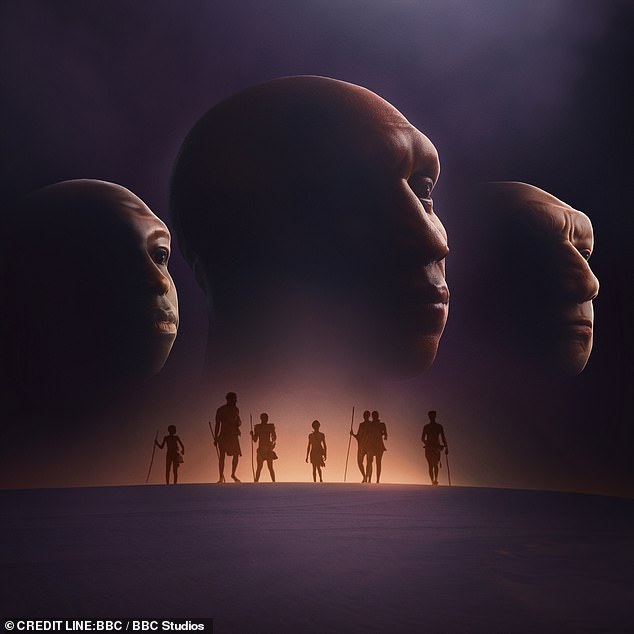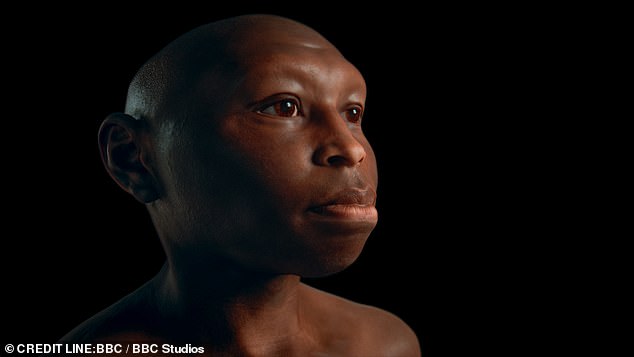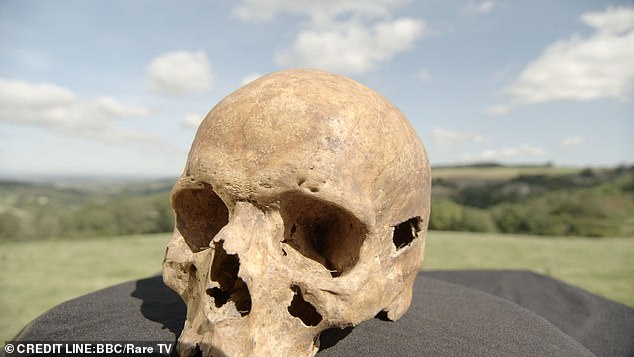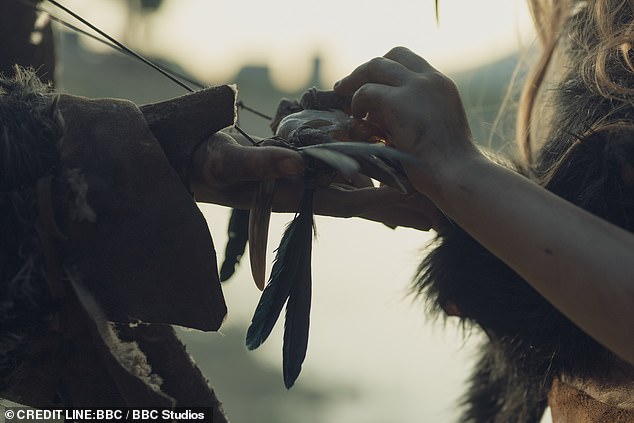Before the wheel, before language and art, before farming or anything else that made us civilised, mankind invented the Neighbours From Hell.
Ella Al-Shamahi, tracing the development of Homo sapiens across 300,000 years of prehistory in the first of a five-part series, Human, discovered two caves on the side of Mount Carmel in Israel.
In one, called Skhul cave, the remains of early modern humans similar to ourselves have been found. In the other, known as Tabun cave, Neanderthal fossils have been uncovered.
‘We don’t know if they interacted,’ Dr Al-Shamahi said. ‘But we do know that while Neanderthals remained in the region, all traces of this group of Homo sapiens vanished.’
It’s pretty obvious the two families didn’t get on. I’m guessing the Neanderthals left all kinds of rubbish strewn around their cave — half-eaten antelopes, bits of rubble, general detritus. Their kids probably ran around without any furs on, and on Saturday night, their teenagers stayed up till all hours banging rocks together.
This nightmare must have dragged on for years. The Homo sapiens tribe put their cave on the market, but no one was buying… so in the end, they gave up and left.
I’m speculating, of course, but that’s the fun of ancient anthropology. Dr Al-Shamahi indulged in some guesswork herself, at another cave in Botswana, where a hoard of stone tools was discovered next to a rocky outcrop that resembled, in some lights, a snake.
The flints, she suggested, could have been ‘offerings’ — implying the snake was worshipped as a god. It seems perfectly feasible: no doubt, families of Homo sapiens across half the planet were praying, ‘Dear Lord Snake, please smite the Neanderthals next-door, or at least get them to stop banging those bloody rocks together.’

Ella Al-Shamahi, tracing the development of Homo sapiens across 300,000 years of prehistory in the first of a five-part series, Human, discovered two caves on the side of Mount Carmel in Israel

Much of the evidence about human evolution is based on fragments, with scientists building their theories from scattered finds and the odd bone

In one, called Skhul cave, the remains of early modern humans similar to ourselves have been found. In the other, known as Tabun cave, Neanderthal fossils have been uncovered

BBC science shows can sometimes become overloaded with information, but this was well-paced, giving us a chance to enjoy the stunning pictures while mulling over what we’d just learned
Inevitably, much of the evidence about human evolution is based on fragments, with scientists building their theories from scattered finds and the odd bone. A handful of tiny shells with traces of red ochre was proof enough for Dr Al-Shamahi to suggest that people were wearing beads as jewellery, up to 70,000 years ago.
To help us envisage this, soft-focus scenes of our nomadic ancestors were shot against gorgeous sunsets and wild African landscapes. Much of this photography was absolutely sumptuous, with the human figures picked out in blurred silhouettes.
It was hard to see exactly what was going on, but the end credits listed an ‘intimacy co-ordinator’, so perhaps we should be grateful for the soft-focus.
BBC science shows can sometimes become overloaded with information, but this was well-paced, giving us a chance to enjoy the stunning pictures while mulling over what we’d just learned.
Though she has presented documentaries before, on the ancient Egyptians and other lost civilisations, this is Ella Al-Shamahi’s first landmark series, and she handled it confidently: informative without being didactic, awed without being pretentious.












